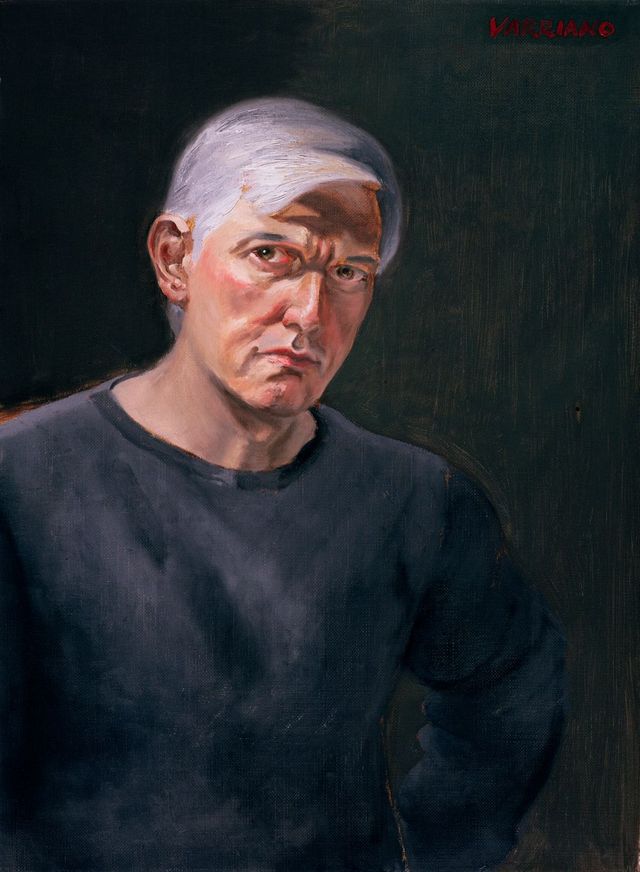How Figurative Oil Painting Changes Conventional Artistic Expression
How Figurative Oil Painting Changes Conventional Artistic Expression
Blog Article
A Trip With the Globe of Metaphorical Oil Painting: Discovering the Distinct Qualities and Psychological Deepness of the Medium

Background of Metaphorical Oil Painting
Emerging during the late Center Ages and flourishing throughout the Renaissance, figurative oil paint has a rich background that mirrors both imaginative advancement and cultural development. Originally, oil paints were utilized in Europe as a way to boost the luminosity and depth of color in art work. Artists such as Jan van Eyck originated the medium, demonstrating its potential to record elaborate details and textures, hence permitting a more realistic depiction of the human form.
As the Renaissance proceeded, prominent numbers like Leonardo da Vinci and Michelangelo increased the boundaries of figurative oil painting. They stressed physiological accuracy and point of view, creating works that conveyed feeling and narrative depth. The tool's versatility enabled for testing with light and shadow, leading to the growth of chiaroscuro strategies that even more enhanced the visual experience.
Special Attributes of the Tool
The advancement of metaphorical oil painting has actually been substantially influenced by the one-of-a-kind features of the tool itself. Oil paint, made up of pigments suspended in oil, supplies musicians a remarkable versatility that enables a large range of appearances and surfaces. Its slow drying time enables meticulous blending and layering, which can develop depth and luminosity unattainable in various other mediums.
Additionally, oil paint's rich pigmentation offers vivid colors that maintain their strength over time. This characteristic is crucial in metaphorical painting, where capturing the subtleties of complexion and emotional expressions is vital. The capability to attain soft shifts and subtle slopes improves the realistic quality of subjects, permitting musicians to share complicated emotional states.
Additionally, oil paint adheres well to different surfaces, such as canvas, steel, and wood, broadening the range of artistic expression. The tool's adaptability supports various approaches, from detailed realistic look to meaningful brushwork, making it possible for musicians to discover their individual styles.
Eventually, the special residential or commercial properties of oil paint not only improve the aesthetic experience but likewise equip artists to interact extensive narratives, making metaphorical oil painting a deeply evocative art form.
Techniques and Styles Utilized
Within the realm of metaphorical oil paint, musicians use a varied array of techniques and designs that contribute to the deepness and richness of their job. One prominent technique is polishing, where clear layers of paint are used over dried layers, enabling light to mirror and penetrate, improving brightness and depth. This technique is usually utilized to achieve a feeling of realism and intricacy in skin tones.
An additional technique is impasto, where thick layers of paint are used with a combination blade or brush, developing a textured surface area that includes a three-dimensional quality to the paint. This style can evoke a natural action, attracting the visitor in with its responsive nature.
Musicians additionally explore various brushwork styles, from penalty, in-depth strokes that capture elaborate attributes to more comprehensive, extra expressive strokes that convey activity and emotion (figurative oil painting). The selection of shade combination significantly influences the general mood of an item, with cozy tones usually giving sensations of convenience and awesome tones recommending sorrowful
Additionally, the integration of chiaroscuro, the comparison between light and shadow, permits musicians to create significant effects that improve the narrative top quality of their job. Each technique and design is very carefully chosen to elevate the visitor's experience and understanding.
Emotional Depth in Figurative Art
Emotional depth works as a keystone in metaphorical art, enabling musicians to transcend simple representation and engage viewers on an extensive level. This psychological resonance is usually attained through the nuanced portrayal of human figures, expressions, and communications. Artists harness the power of shadow, light, and color to stimulate sensations that resonate deeply with the target market, creating a visceral link to the topic.
In figurative oil painting, the complex layering of paint can mirror the complexities of human feeling. The selection of palette, whether trendy or warm, plays a vital role in setting the mood and environment of an item. Softer shades might evoke tranquility see this here and introspection, while strong, contrasting shades can communicate stress and drama.

Influential Artists and Their Functions
Numerous influential musicians have actually dramatically shaped the landscape of metaphorical oil painting, each adding special point of views and strategies that remain to influence modern creators. Among these musicians, Lucian Freud stands out for his intense mental deepness and raw representation of the human kind, frequently obscuring the lines between appeal and decay. Freud's jobs, defined by thick, impasto brushstrokes, invite viewers to confront the complexities of identification and susceptability.

In A Similar Way, Andrew Wyeth's precise realism in items like "Christina's Globe" catches profound stories within apparently straightforward make-ups. His usage of light and shadow stimulates a sense of nostalgia and psychological resonance, drawing audiences into the intimate globes he represents.
In the world of contemporary art, Kehinde Wiley has gained recognition for his dynamic, epic pictures that test traditional concepts of depiction. By putting people of color in contexts evocative classic portraiture, Wiley's job redefines the canon of art background.
These musicians, along with others, have not just enriched figurative oil painting yet have likewise increased the discussion surrounding society, feeling, and identification, guaranteeing that the tool continues to be an important kind of expression in the art world. figurative oil painting.
Conclusion
Finally, metaphorical oil paint stays a powerful medium that encapsulates the intricacies of human feeling through its rich coloring and functional strategies. The historic development of this art form, incorporated with its unique attributes, permits for profound artistic expression. Strategies such as glazing and impasto enhance the emotional resonance of each item, while the payments of prominent artists remain to shape the discourse and motivate surrounding this ageless style. The trip with metaphorical oil painting discloses its enduring value in the art globe.
The expedition of metaphorical oil painting uses a profound understanding into the interaction of strategy, feeling, and historic context that defines this age-old tool. Oil paint, made up of pigments put on hold in oil, webpage provides artists an impressive convenience that enables for a large variety of finishes and structures.Within the realm of figurative oil paint, artists use a varied array of techniques and styles that add to the deepness and splendor of their work.Countless influential musicians have actually significantly shaped the landscape of figurative oil paint, each adding distinct perspectives and techniques that continue to influence modern creators.In conclusion, blog figurative oil painting remains a powerful tool that envelops the complexities of human emotion with its abundant coloring and flexible methods.
Report this page